Are you longing to savor the taste of juicy, flavorful tomatoes straight from your own bountiful garden? Look no further! In this exclusive guide, we unveil the hidden techniques and tips to help you nurture vibrant tomato plants that will yield a mouthwatering harvest.
Picture yourself strolling amidst lush greenery, the sun's warm rays upon your back, as you pluck a ripe tomato from the vine and take a bite. Enveloped in its tantalizing aroma, the burst of sweetness and tang on your tongue will transport your taste buds to paradise. With our expert guidance, you can make this sweet vision a reality in your very own slice of heaven.
Discover the horticultural wizardry that lies behind cultivating luscious tomatoes that are brimming with juiciness and flavor. Armed with our invaluable advice, you will become a master of the tomato-growing domain, unearthing the secrets of soil preparation, proper watering techniques, and optimal temperature controls. Harness the power of organic fertilizers and natural remedies to ward off pests and diseases, and witness your tomato plants flourish under your attentive care.
Prepare to embark on an epic journey that will transform your garden into an oasis of delight and culinary excellence. We will delve into the myriad of tomato varieties, introducing you to the nuances of heirloom treasures and the vibrant colors of cherry tomatoes. Whether you have a sprawling backyard or a compact urban balcony, our recommendations will ensure that you maximize your tomato harvest, regardless of space constraints.
Tips for Cultivating Irresistible, Flavorful Tomatoes in an Idyllic Landscape
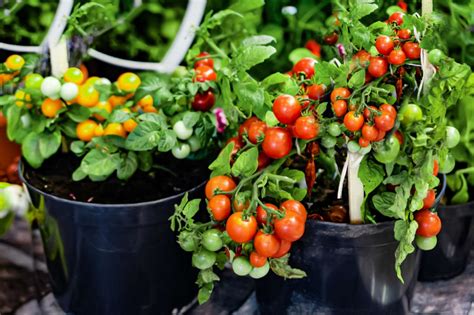
When it comes to transforming your backyard haven into a tomato lover's paradise, there are several strategies that will help you achieve mouthwatering results. By employing these expert tips and techniques, you'll be well on your way to cultivating delectable, succulent tomatoes that will surpass even your wildest dreams.
1. Select Superior Varieties:
Start off on the right foot by choosing high-quality tomato varieties known for their exceptional taste and texture. Opt for heirloom or heritage options, as these often offer a wide range of unique flavors, from sweet and tangy to rich and complex.
2. Provide Optimal Soil Conditions:
Achieving optimal soil conditions can significantly enhance the growth and flavor of your tomatoes. Ensure your soil is well-draining, loamy, and enriched with organic matter. Incorporating compost or well-rotted manure into the soil is an excellent way to promote healthy root development and provide essential nutrients.
3. Give Them Plenty of Sunshine:
Tomatoes thrive in full sunlight, so choose a location in your garden that receives at least 6-8 hours of direct sunlight each day. Make sure there are no large shade-providing objects nearby, such as trees, buildings, or tall structures, that might obstruct the sunlight.
4. Water Consistently and Adequately:
Consistent, thorough watering is crucial for promoting healthy tomato growth and preventing issues like blossom-end rot. Water your plants deeply and evenly, ensuring the soil remains consistently moist but not waterlogged. Avoid overhead watering, as this can increase the risk of diseases.
5. Properly Space and Prune:
Proper spacing between tomato plants is essential to allow for adequate air circulation and prevent the spread of diseases. Depending on the variety, allocate at least 2-3 feet of space between plants. Additionally, regularly prune your tomato plants to remove any suckers that divert energy from fruit production.
6. Implement Mulching Techniques:
Mulching around your tomato plants can have numerous benefits. It helps regulate soil temperature, reduce weed growth, and conserve moisture. Organic mulches such as straw or wood chips are great choices, as they gradually break down and enrich the soil over time.
7. Support and Stake Your Plants:
Providing proper support for your tomato plants is important for preventing bending, breaking, and damage from heavy fruit. Use stakes, trellises, or cages to support the plants as they grow, allowing them to remain upright and ensuring good air circulation.
8. Control Pests and Diseases:
Keep a close eye on your tomato plants for any signs of pests or diseases. Take preventative measures, such as regularly inspecting the foliage, using organic pest control methods like companion planting or introducing beneficial insects, and promptly addressing any issues that arise.
By incorporating these valuable suggestions into your tomato-growing routine, you'll be well-equipped to create a bountiful harvest of irresistibly juicy and flavorful tomatoes right in your own garden.
Choosing the Right Tomato Varieties
In the quest to cultivate delectable and flavorful tomatoes in your cherished outdoor oasis, one crucial step is selecting the appropriate tomato varieties for your garden. The wide array of tomato types available opens up a world of possibilities, allowing you to handpick options that suit your taste preferences, growing conditions, and culinary needs.
When it comes to choosing the right tomato varieties, it is vital to consider factors such as size, color, flavor, texture, and disease resistance. This comprehensive guide will walk you through different types of tomatoes available, each with their distinct characteristics and advantages.
Determinate Tomatoes
- Roma
- Paste Tomato
- Cherry
Determinate tomatoes, often referred to as bush tomatoes, are known for their compact size and limited growth habit. They are ideal for gardens with limited space or containers. Roma tomatoes, an example of determinate tomatoes, offer a firm texture and low moisture content, making them perfect for sauces and canning. Paste tomatoes are also a popular choice for making tomato paste or puree. On the other hand, cherry tomatoes are small, round or oval-shaped fruits bursting with sweet flavors, making them excellent for salads or snacking.
Indeterminate Tomatoes
- Beefsteak
- Heirloom
- Grape
Indeterminate tomatoes, known as vining tomatoes, continue to grow and produce fruit throughout the growing season. These varieties typically require sturdy support structures, such as stakes or cages, to prevent them from sprawling on the ground. Beefsteak tomatoes, renowned for their large size and juicy flesh, are cherished for their rich and intense flavor, perfect for sandwiches and slicing. Heirloom tomatoes encompass a diverse range of open-pollinated varieties, each with its unique flavor, color, and history. Grape tomatoes, with their elongated shape and sweet taste, are perfect for adding to pasta dishes or roasting for an intense burst of flavor.
By exploring the world of tomato varieties, you can personalize your gardening experience and savor a wide range of sumptuous flavors. With careful consideration and selection, you can ensure a bountiful harvest of mouthwatering tomatoes that will delight your taste buds and enhance your culinary creations.
Preparing the Soil for Planting Tomatoes
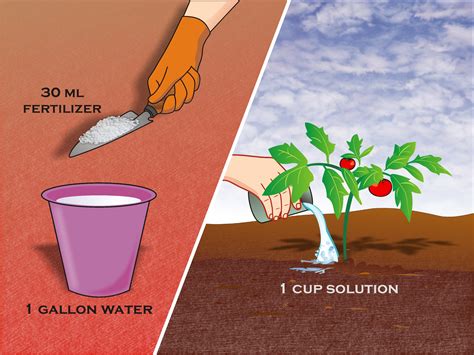
In order to ensure optimal growth and development of tomato plants, it is crucial to properly prepare the soil before planting. The quality of the soil directly impacts the overall health and productivity of the tomato plants. This section will outline key steps to prepare the soil, creating an ideal environment for successful tomato cultivation.
1. Soil Testing: Before starting the preparation process, it is advisable to perform soil testing. This allows for a better understanding of the soil's composition, including its pH level, nutrient content, and drainage capabilities. Testing provides valuable insights that can guide in determining the necessary amendments required for tomato plant growth.
2. Clearing the Area: Begin the preparation process by removing any existing vegetation, weeds, rocks, or debris from the designated tomato growing area. Clearing the area helps eliminate competition for water, nutrients, and sunlight, providing a clean slate for the tomato plants to flourish.
3. Loosening the Soil: Next, use a garden fork or tiller to loosen the soil to a depth of at least 12 inches. Breaking up compacted soil allows for better root penetration, drainage, and aeration, essential for healthy tomato plant growth. It also helps in the absorption and retention of water and nutrients.
4. Adding Organic Matter: Incorporating organic matter into the soil is vital for enriching its fertility and improving overall soil structure. Adding compost, well-rotted manure, or other organic materials helps increase nutrient content, enhances moisture retention, and promotes beneficial microbial activity.
5. Balancing Soil pH: Tomato plants prefer slightly acidic soil with a pH range between 6.0 and 6.8. If the soil pH is outside this range, it is necessary to adjust it accordingly. Adding garden lime to raise pH or sulfur to lower pH can help achieve the optimal acidity level required for successful tomato growth.
6. Incorporating Fertilizers: Based on the soil test results, appropriate fertilizers can be added to fulfill the nutrient requirements of the tomato plants. This may include nitrogen, phosphorus, and potassium, as well as other micronutrients essential for healthy plant development. Follow the recommended application rates for each fertilizer and mix them into the soil thoroughly.
7. Raking and Smoothing: After incorporating amendments and fertilizers, rake the soil gently to ensure even distribution of organic matter and fertilizers. Smoothing the surface creates a level bed for planting and facilitates uniform moisture distribution. This step prepares the soil for successful tomato plant establishment.
By following these steps and adequately preparing the soil, gardeners can create an optimal environment that sets the stage for healthy, robust tomato plants and abundant harvests.
Providing Adequate Sunlight and Watering
When it comes to cultivating delectable and luscious tomatoes in your enchanting garden, one crucial aspect to consider is providing them with the appropriate amount of sunlight and watering. This section will delve into the significance of these two vital elements and how they contribute to the thriving growth of your tomato plants.
Sunlight plays a pivotal role in the photosynthesis process for tomato plants. By absorbing sunlight, these remarkable plants convert light energy into chemical energy, which fuels their growth and development. Therefore, it is essential to ensure that your tomato plants receive an ample amount of sunlight throughout the day. Positioning your plants in an area where they can bask in the sun's radiant rays for a significant duration will result in stronger stem development, vibrant green foliage, and ultimately, bountiful and succulent tomatoes.
In addition to sunlight, providing adequate watering is paramount for the overall health and success of your tomato plants. Just like any living organism, tomatoes require water to survive and thrive. Water serves as a crucial medium for nutrient uptake, enabling these delightful plants to absorb essential minerals and sustain their growth. It is crucial to strike a delicate balance when it comes to irrigation, ensuring that your tomato plants receive an appropriate amount of water without drowning them. Consistency is key - while it is vital to keep the soil consistently moist, it is equally important to avoid overwatering, as it can lead to root rot or other detrimental diseases.
As you embark on your journey to cultivate mouthwatering and flavorsome tomatoes in your desired garden, remember to prioritize the provision of adequate sunlight and watering. By understanding the significant role they play in the growth and development of your tomato plants, you are laying the foundation for a successful and rewarding gardening experience.
Choosing the Ideal Planting Spot
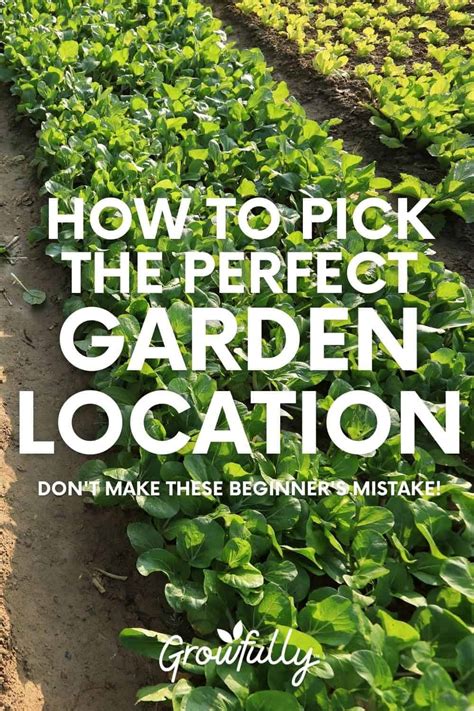
When it comes to cultivating luscious and delectable tomatoes in your envisioned outdoor space, the selection of the perfect location is of utmost importance. The proper placement of your tomato plants can significantly contribute to their overall growth, productivity, and taste. In this section, we will explore the essential factors to consider when choosing the optimal spot to plant your tomato seedlings.
1. Sunlight Exposure: Tomatoes thrive in ample sunlight, which aids in their photosynthesis and fruiting process. Look for a spot in your garden that receives at least six to eight hours of direct sunlight daily. A sunny location ensures that your tomatoes receive the necessary energy to produce juicy and flavorful fruits.
2. Soil Quality: The quality of the soil plays a vital role in the growth and development of tomatoes. Opt for loamy or sandy soil with good drainage capabilities. Check the pH level of the soil, aiming for a slightly acidic range between 6.0 and 6.8. Adequate soil preparation and enrichment with organic matter will provide your tomato plants with essential nutrients for vibrant growth.
3. Shelter from Harsh Elements: While tomatoes require sunlight, they also benefit from protection against strong winds and extreme temperatures. Choose a spot that offers some natural or man-made shelter, like a fence, wall, or nearby trees, which will shield your plants and prevent them from being damaged by gusts of wind or scorching heat.
4. Proximity to Water Source: Tomatoes are thirsty plants that demand consistent irrigation. Ensuring that your chosen planting location is in close proximity to a water source – be it a hose, watering can, or irrigation system – will make it easier for you to provide the necessary moisture to your tomato plants, promoting healthy growth and preventing drought stress.
5. Consider Companion Planting: Enhance the growth of your tomatoes by considering companion plants that can help deter pests or provide mutually beneficial elements. Plants like basil, marigold, and parsley can act as natural pest repellents, while carrots and onions can improve the overall health of your tomato plants, creating a symbiotic relationship within your vegetable garden.
By carefully selecting the planting location for your tomato plants, you are setting the stage for a rewarding gardening experience that will yield abundant, succulent tomatoes bursting with flavor. Consider these factors mentioned above to ensure the optimal conditions for your tomatoes to truly thrive and become the envy of every green thumb.
Planting Tomato Seedlings for Optimal Growth
When it comes to establishing strong and healthy tomato plants in your ideal garden, the proper planting of tomato seedlings plays a crucial role. By following these guidelines, you can ensure the successful growth and development of your tomato plants, resulting in a bountiful harvest of flavorful, succulent tomatoes.
Firstly, it is essential to choose a suitable location for your tomato seedlings. Select an area that receives an ample amount of sunlight throughout the day, as tomatoes thrive in full sun. Additionally, ensure that the soil is nutrient-rich and well-draining to promote optimal growth. Testing the soil's pH level and making necessary amendments can further enhance the conditions for your seedlings.
Before planting your tomato seedlings, prepare the soil by loosening it with a garden fork or tiller. Remove any weeds or debris and incorporate organic matter, such as compost or well-rotted manure, to improve the soil's fertility and structure. This step aids in providing a favorable environment for the roots of the seedlings to establish and thrive.
When it comes to spacing, it is crucial to provide sufficient room between tomato plants to allow for proper air circulation. Adequate spacing helps prevent the spread of diseases and allows the plants to receive ample sunlight and nutrients without competing with one another. The recommended spacing varies depending on the type of tomato and its growth habit, so refer to the specific variety's guidelines for optimal results.
Next, gently remove the tomato seedlings from their containers or seed trays, being careful not to damage the delicate roots. Place each seedling in a hole that is deep enough to accommodate the plant up to its first set of leaves. The buried portion of the stem will develop additional roots, promoting a stronger and more robust plant. Firmly tamp the soil around the seedling to ensure it is secure and upright.
After planting, water the seedlings thoroughly but be cautious not to overwater, as excessive moisture can lead to rotting or fungal diseases. Maintain a consistent watering schedule, aiming to keep the soil evenly moist, but not waterlogged. As the plants grow, provide support by staking or using cages to prevent the branches from drooping under the weight of the developing fruits.
By following these guidelines for properly planting tomato seedlings, you are laying a solid foundation for the successful growth and development of your tomato plants. With careful attention to the specific needs of your chosen tomato varieties, coupled with regular maintenance, you will be rewarded with a garden full of flourishing tomato plants and a harvest of delectable, delectable tomatoes.
Retaining Moisture and Controlling Weeds with Mulch
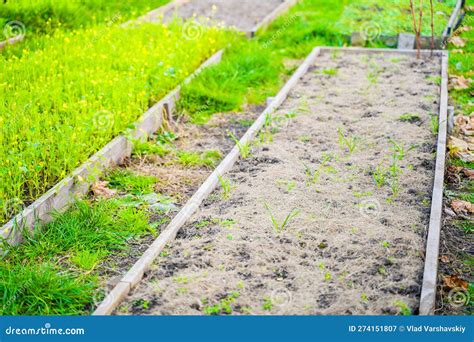
In this section, we will explore the benefits of utilizing mulch in your tomato garden. Mulch serves as a protective layer that helps conserve moisture in the soil, ensuring a consistent water supply for your plants. Additionally, it acts as a natural weed barrier, reducing the need for manual weeding and minimizing competition for nutrients.
Conserving Moisture: Mulch acts as an effective shield, preserving moisture within the soil by reducing evaporation. By retaining moisture, especially during hot and dry periods, your tomato plants will receive a steady water supply, preventing dehydration and allowing for optimal growth.
Controlling Weeds: Mulch plays a crucial role in weed management. By covering the soil surface, it obstructs weed growth by blocking sunlight and impeding weed germination. This significantly reduces the time and effort required for manual weeding, allowing you to focus more on nurturing your tomato plants.
Types of Mulch: There are various types of mulch that can be used in your tomato garden, including organic options such as straw, wood chips, or compost. Each type has its advantages and considerations, so it's important to choose the one that suits your specific gardening needs.
Application: To maximize the benefits of mulch, apply a layer of approximately 2-4 inches around the base of your tomato plants, ensuring that the mulch does not touch the stem directly. This will help maintain an ideal moisture level and minimize the risk of stem rot.
In conclusion, incorporating mulch in your tomato garden is a practical and effective technique for retaining moisture and controlling weeds. By utilizing the right type of mulch and applying it correctly, you can create an environment that promotes healthy tomato plants and a bountiful harvest.
Pruning and Supporting Tomato Plants
Enhancing the growth and productivity of tomato plants involves a vital technique known as pruning and supporting. This methodology aids in the development of healthier and more robust plants, which ultimately yield abundant and flavorsome fruits.
Pruning refers to the selective removal of specific parts of the tomato plant, such as suckers and foliage, to create optimal airflow, promote better light penetration, and direct the plant's energy toward fruit production. By removing unwanted stems, the plant can allocate more nutrients to the development of luscious tomatoes.
Supporting tomato plants is equally critical to ensure their stability and proper growth. With the weight of the fruits and the plant's sprawling nature, providing sturdy support prevents them from falling or tangling with the ground, reducing the risk of disease and pests. Various techniques, such as staking, caging, or trellising, can be employed to support tomato plants, thereby enabling them to thrive and reach their maximum potential.
Pruning and supporting tomato plants also play a considerable role in preventing the spread of diseases and enhancing overall plant health. By eliminating overcrowded foliage and improving air circulation, the risk of fungal infections and other diseases is significantly reduced. Additionally, supporting the plants helps keep their fruits off the ground and shields them from potential soil-borne diseases.
Moreover, pruning and supporting can positively influence the flavor and quality of the tomatoes grown in your garden. The removal of unnecessary growth encourages the plant to channel its energy towards fruit development, resulting in larger, juicier, and more delicious tomatoes. Furthermore, supported plants experience less stress and produce tomatoes with fewer blemishes or deformities, leading to a more enjoyable and aesthetically pleasing harvest.
In conclusion, incorporating pruning and supporting techniques into your tomato cultivation endeavors is essential for maximizing the yield and quality of your harvest. By intelligently removing unwanted growth and providing adequate support, you can enjoy a bountiful crop of delectable tomatoes straight from your garden.
Preventing Common Tomato Pests and Diseases
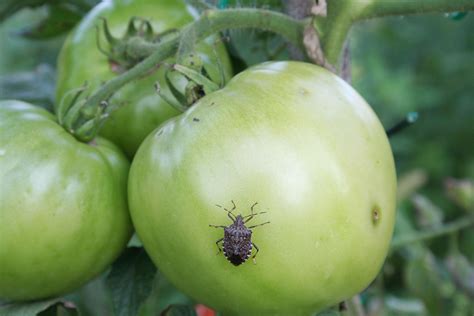
Maintaining the health and vitality of your prized tomato plants is essential to ensure a bountiful harvest. In this section, we will explore effective methods to safeguard your plants from the threats of pests and diseases.
1. Pest Control: One of the key challenges faced by tomato growers is keeping pests at bay. These destructive creatures can inflict irreparable damage to your plants, compromising both their growth and yield. Implementing organic pest control practices, such as companion planting, introducing beneficial insects, and regularly inspecting your plants for signs of infestation, can help deter and eliminate common tomato pests such as aphids, caterpillars, and whiteflies. By taking proactive measures, you can protect your tomatoes from the havoc caused by these unwanted intruders.
2. Disease Prevention: Tomato plants are susceptible to various diseases that can hinder their development and lead to poor-quality fruits. A crucial step in disease prevention is planting disease-resistant varieties. These varieties possess genetic traits that enable them to withstand and combat specific diseases. Additionally, practicing good hygiene by removing and disposing of infected plant debris, providing adequate spacing between plants to promote airflow, and avoiding overhead watering methods can significantly reduce the risk of diseases such as blight, wilt, and leaf spot. By preemptively taking these precautions, you can fortify your tomato plants against the detrimental effects of diseases.
3. Nutrient Management: Ensuring your tomato plants receive the proper balance of nutrients is vital for their overall health and resilience against various vulnerabilities. Providing a nutrient-rich soil through regular amendments, such as compost and organic fertilizers, can enhance the vigor and disease resistance of your plants. Furthermore, monitoring the pH level of the soil and making necessary adjustments can optimize nutrient uptake, enabling your tomatoes to thrive and ward off potential issues.
4. Cultural Practices: Employing proper cultural practices can significantly contribute to the prevention of pests and diseases in your tomato garden. This includes maintaining clean gardening tools, practicing crop rotation to disrupt pest and disease cycles, and avoiding excessive nitrogen fertilization, which can make plants more susceptible to certain ailments. By adopting these good cultural practices, you can create an environment that discourages the establishment and proliferation of threats to your tomatoes.
5. Early Detection and Intervention: Regular and attentive monitoring of your tomato plants is essential to identify any signs of pest infestation or disease development promptly. By recognizing the early warning signs, such as yellowing leaves, stunted growth, or wilting, you can take immediate action and employ suitable remedies or treatments to prevent further harm. Early intervention is key to preserving the health and productivity of your tomato plants and safeguarding your anticipated harvest.
In conclusion, preventing common tomato pests and diseases is crucial to maintain the vitality and productivity of your tomato plants. By implementing effective pest control strategies, practicing disease prevention methods, managing nutrients, adopting proper cultural practices, and staying vigilant for any signs of trouble, you can create an optimal growing environment that ensures the success of your tomato garden.
Harvesting and Enjoying the Fruits of Your Labor
Now that you have put in the time and effort to cultivate your own luscious and delectable crops, it's time to reap the rewards of your hard work. The moment has arrived to savor the mouthwatering flavors of your homegrown tomatoes and relish in the satisfaction of nurturing your own garden-to-table experience.
As your tomatoes ripen on the vine, it is important to harvest them at the perfect stage of ripeness. Gently plucking the mature tomatoes when their color is vibrant and their flesh is firm but slightly yielding will ensure a superior taste and texture. This step is crucial in guaranteeing that you fully enjoy the juicy and succulent flavors that your tomatoes have developed.
One effective approach to harvesting your tomatoes is using a pair of sharp gardening shears or scissors. This helps to minimize damage to the plant and ensures a clean cut. By snipping off the ripe tomatoes close to the stem, you can prevent unnecessary stress to your plants and maintain their overall health and productivity.
After gathering your bountiful harvest, it's time to fully immerse yourself in the exquisite flavors of your homegrown tomatoes. There are countless ways to savor these vibrant fruits, from enjoying them fresh in salads or sandwiches to incorporating them into delicious homemade sauces and salsas.
- Savor the simplicity of a classic Caprese salad by layering fresh tomatoes with creamy mozzarella cheese and fragrant basil leaves, drizzled with a delicate olive oil and balsamic vinegar dressing.
- Indulge in the rich flavors of a tomato-based pasta sauce, simmered slowly with garlic, onions, herbs, and your homegrown tomatoes. Enhance the taste by adding a touch of red wine or a dash of spicy chili flakes.
- Tickle your taste buds with a refreshing tomato salsa, combining diced tomatoes with onions, jalapeños, cilantro, lime juice, and a pinch of salt. Serve it alongside some crispy tortilla chips for a truly delightful snack.
Not only will you enjoy the superior taste and quality of your tomatoes, but you will also have the satisfaction of knowing that they are free from harmful pesticides and chemicals. With every bite, you can relish in the knowledge that you have nurtured these fruits to perfection, transforming your dream of a flourishing garden into a reality.
FAQ
What are some tips for growing juicy and delicious tomatoes?
To grow juicy and delicious tomatoes, you should choose the right variety that suits your climate, provide plenty of sunlight, water consistently but avoid overwatering, use high-quality soil and fertilizer, and prune the plants to promote air circulation.
What are the best tomato varieties for a dream garden?
There are several tomato varieties that are known for their exceptional taste and ideal for a dream garden. Some popular choices include Brandywine, Cherokee Purple, Sungold, Green Zebra, and Roma. These varieties offer a range of flavor profiles and are highly recommended for their outstanding taste.
Can you share some advice on preventing common tomato pests and diseases?
To prevent common tomato pests and diseases, it is important to practice good garden hygiene by removing any diseased plant debris and regularly inspecting the plants for pests. Additionally, you can use natural remedies such as neem oil or companion planting with marigolds to deter pests. Applying organic fungicides and using disease-resistant tomato varieties can also help prevent diseases.
What is the ideal time to harvest tomatoes for the best taste?
The ideal time to harvest tomatoes for the best taste is when they are fully ripened on the vine. This is indicated by the tomatoes reaching their full color (depending on the variety) and having a slight give when gently squeezed. Harvesting them at this stage ensures maximum sweetness and flavor.
How can I store tomatoes to maintain their freshness and flavor?
To store tomatoes and maintain their freshness and flavor, it is best to keep them at room temperature, away from direct sunlight. Storing them in a single layer rather than stacked prevents bruising. If the tomatoes are overripe, it is recommended to refrigerate them, but make sure to allow them to come back to room temperature before consuming to enhance their flavor.



